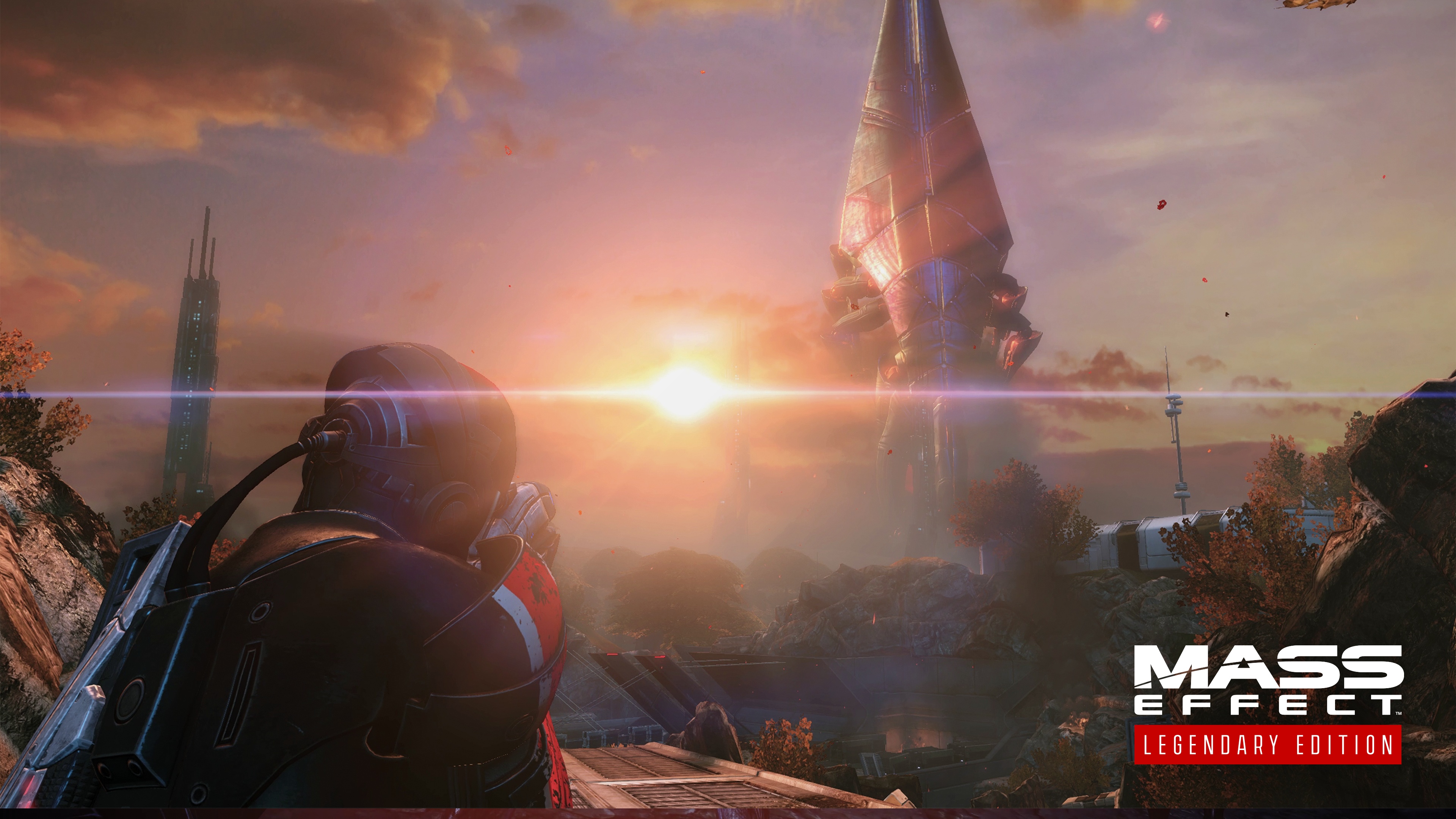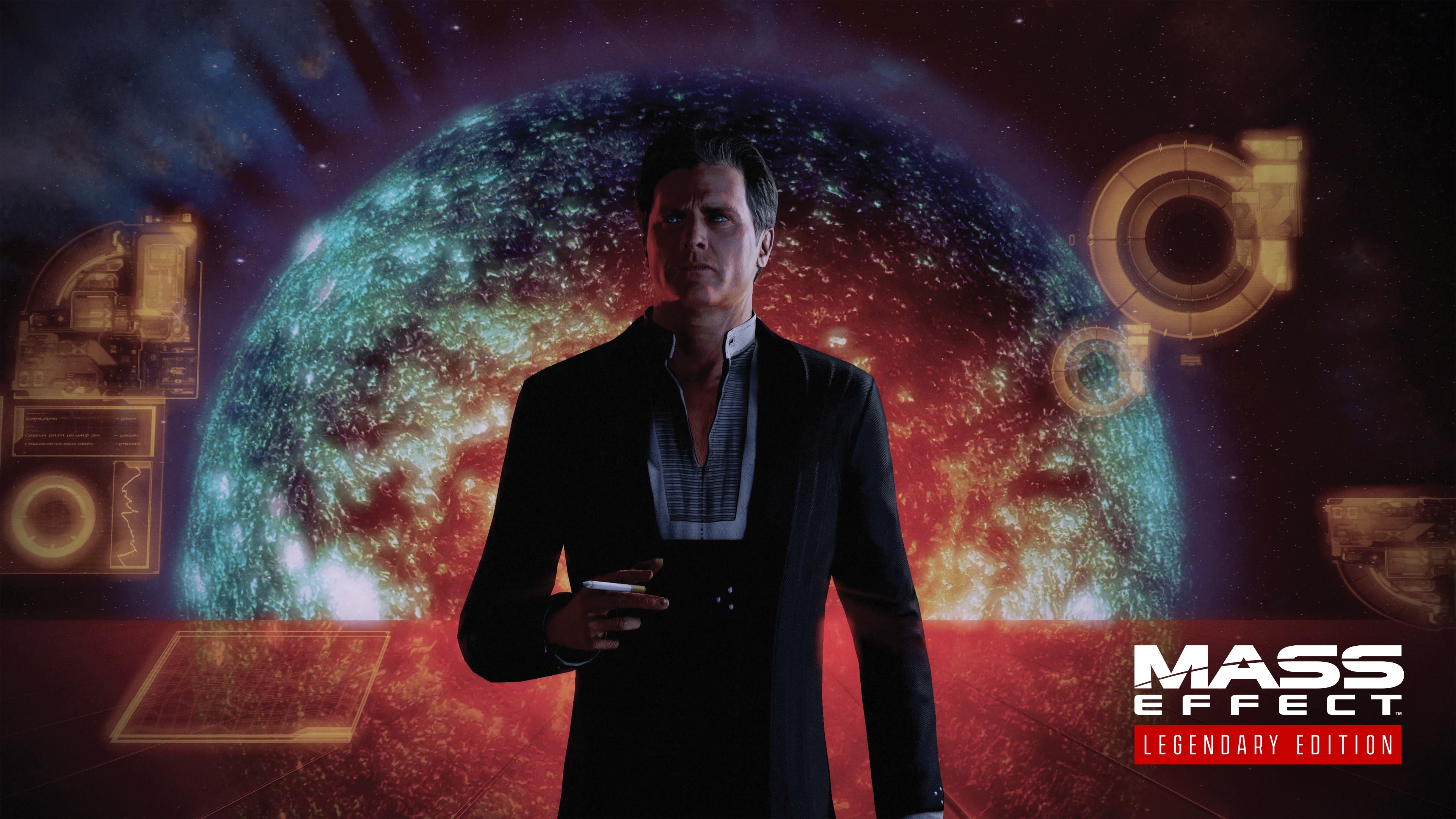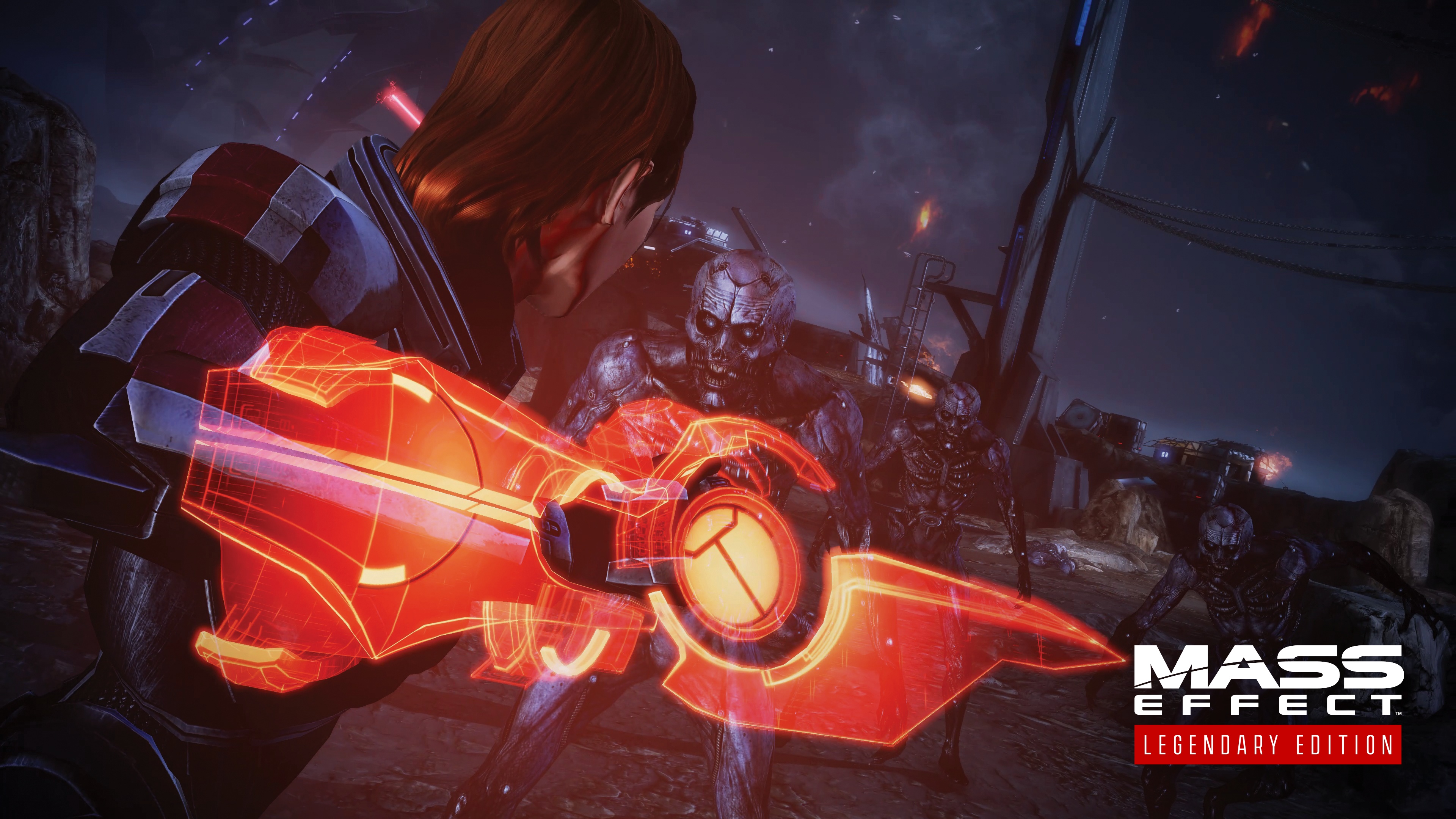Whatever you think about how it ended, or about that ill-fated sequel trip to another galaxy, Commander Shepard’s trilogy is one of the most thrilling in video game history. The smoke and mirrors of its choice and consequence are generally exquisitely executed – and it deserves to be replayed.
That makes the pressure on BioWare for any re-release surprisingly significant. Here you have three games that are all quite different – especially the first – and yet they are inexorably intertwined. They’re designed to be played in succession, which isn’t so problematic when they’re played a few years apart – but put them back-to-back, as they’re presented here, and the differences feel more pronounced. How do you smooth that out without damaging the beloved originals?
BioWare feels as though it has landed upon an elegant answer with Mass Effect: Legendary Edition, a package that is basically a 4K remaster of the Xbox 360 and PS3 games. The package provides a hefty visual upgrade for all three games alongside relatively minor tweaks to gameplay mechanics – though exactly how much has changed varies from game to game.
Naturally, Mass Effect 3 has changed the least. The oldest, original game has changed the most. But all will be familiar – and the studio has been wise enough not to try something silly like back-porting the Mass Effect 2 or 3 controls and handling to the original game. What we get instead is more subtle.
Since the visuals are generally pretty obvious, even in the most unillustrative assets released to us for these previews, let’s talk about gameplay first.
In Mass Effect 2 and 3, little has seemingly changed. In fact, in a one hour presentation of the Legendary Edition, BioWare developers barely touched upon how the second and third entries in the series play, presumably because it’s all as it was in 2010 and 2012. ME3 multiplayer is omitted from this collection, but the core solo portion of these games is largely unchanged. This makes sense; the latter two entries are similar, and have a natural ramp up of abilities and power between the games if you import a save. The first is a different matter, however.

In Legendary Edition, the first Mass Effect does ultimately play the same. You still have overheating guns rather than a traditional ammo and reload system, for instance. The quest setup, deeper and more RPG-focused character progression, and different movement of that first game remains intact. BioWare is making minor tweaks, however, many of which will bring the game more in line with ME2 and ME3.
- The Mako has been tweaked. It’s faster, with new physics.
- Elevators are way faster. They’re almost four times quicker than they were in the original, at least in a PC demo BioWare showed off.
- There’s a redesigned UI. The way things such as grenades and medi-gel works isn’t different, but they will be displayed on screen differently – giving the game a slightly more modern look that’s closer to the sequels.
- AI has been improved. Both AI squad mates and enemies have been improved – and several boss encounters have been tweaked and adjusted.
- Significant Rebalancing across the board. This includes things like tweaked boss battles and weapon handling to make each manufacturer and level of weapon unique, but also larger changes like allowing any class to use any weapon (without the ability to train & improve proficiency) and rebalancing XP gain so the level cap of 60 can be hit on a first play-through.
- ME2/3 style aim assist. With aim assist, aiming down sights will now ‘snap’ to a nearby enemy. In addition, camera control is smoother in general, including when aiming down a scope.
- Adjusted control scheme. The controls will be much the same, but they have been slightly modified to bring them closer to ME2 & 3, including a dedicated melee button where in the original ME1, melee would automatically trigger if you fired close to an enemy.
- Mini-game parity across platforms. The original version of ME1 had completely different mini-games on console and PC. All versions are now unified, and mini-game difficulty and frequency has been reduced somewhat.
- Full, equal character customization. All character creation features are unified across all three games. That means the ‘iconic’ female Shepard from ME3 is now ME1’s default. If you choose to create a custom Shepard in ME1, you’ll have the same customization options as in ME3 – all games are equal in this sense.
As for the visual & presentational changes, here’s what to expect:
- 4K Ultra HD, HDR & 60fps presentation for all three games. 60 fps will be available on Xbox One X and PS4 Pro, as well as new-gen consoles..
- Updated character models across all three games, from minor NPCs to squad members. The ‘heroic’ female Shepard has had her appearance slightly tweaked to bring her quality closer to the iconic male model, too.
- Tens of thousands of textures upressed, with textures increased between 4 and 6 times in size, depending on the texture.
- Updated lighting, shaders & VFX including dynamic shadows, volumetric effects and depth-of-field, all resulting in a more modern look
- Pre-rendered cinematics enhanced with AI upscaling and new effects
- PC bonuses including proper native controller support, 21:9 widescreen, keybindings and DirectX 11 support.

The aim with these games, BioWare explained, is to unify as many elements of the trilogy as they could without sacrificing the unique flavor of each game. The changes are minor in ME2 and 3, as they were already similar, but that’s why the first game features improvements to things like aim assist without actually changing the very different way the shooting flows.
BioWare started with the visuals, though. The process the studio took is actually fascinating. First, the team got the games running. The next step was to increase the size cap on textures, allowing for far more detail in bigger files. Next, assets were run through an AI upscaler alongside some other custom software to automate the process of upgrading the game’s visuals. At this point, individual artists were assigned areas or levels that they’d then play repeatedly. They’d spot areas where the AI hadn’t done a good enough job, make a note, and go in and replace or adjust as necessary with a human touch.
All of this works to get to art that is higher resolution, correct, and thematically appropriate to the mood of each game. As with how it plays, the first Mass Effect required a little more specific love here. On tutorial level Eden Prime, for instance, developers made the decision to move the sun – which is behind you throughout the level in the original game. In the Legendary Edition, the sun bears down hard on the critical path, allowing new lighting effects to quite literally shine on the ruined colony. For another example, the distant skyline on Feros has been enhanced by populating it with more buildings and far more effects to add density to the scene.
Things are more simple in the latter two games, with them just receiving the hand-touched upscale job without broader level design changes. All three look good. You can see some direct examples in our before-and-after screenshots comparison article – though, as noted, the screens aren’t hugely demonstrative.

Sadly, the screenshots and trailer EA provided for the purposes of this preview aren’t very good at demonstrating the overall feel of the upgrade – they show larger vistas and toss massive lens flare in your face rather than highlighting the broader improvements that can be seen moment-to-moment in normal play. What I saw in the preview seems to suggest that this will end up a pretty standard remaster. It will retain the feel of the original game, but the merits of some of the changes are no doubt going to be debated intensely by fans. Flipping the sun on Eden Prime is a perfect example; it certainly looks better, but the move does subtly shift the mood of the level, and fans will now have to debate to decide if it’s an improvement or not.
Many of the efforts are smart. Bringing the ‘iconic’ box art female Shepard from Mass Effect 3 into the first game is an obvious thing, for instance – but it makes a big difference, even if it feels a little strange seeing her standing next to Nihlus and Anderson on the SR1 Normandy.
Making minor adjustments to level skyboxes and backgrounds for the sake of atmosphere is also welcome – though there is a tightrope to be walked here to do this without damaging the original atmosphere in any way. This is something we’ll only be able to judge with the final release. Other changes are just obvious – like including all DLC and weaving it into the story, meaning those missions will now pop up at specific times as you play each game.
Trying to bring together the more disparate aspects of the Mass Effect trilogy is a noble goal. It’s fair to say that these games have aged fairly well – held up by solid writing and lovable characters. It’s a world worth revisiting, and while these are still inevitably going to feel like games from a decade ago, it seems this is a respectful, smartly-designed remaster that changes as much as it can without risking throwing the baby out with the bathwater.
The true extent of the effect of its changes won’t be clear until we can play all three games start-to-finish – but we won’t have to wait long for that. Mass Effect: Legendary Edition releases on May 14 for PC, PlayStation 4, and Xbox One – and those console versions are of course compatible with PS5 and Xbox Series X/S. We’ll bring you a fuller verdict before release.
The post Mass Effect Legendary Edition looks like one of gaming’s sharper 4K remasters – though don’t expect major gameplay changes appeared first on VG247.









